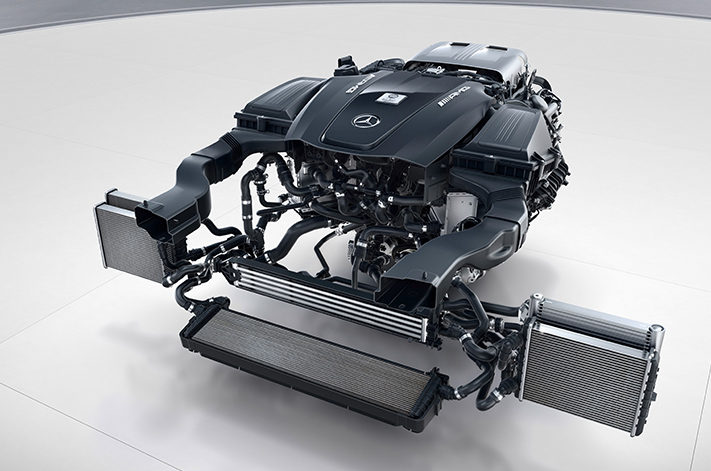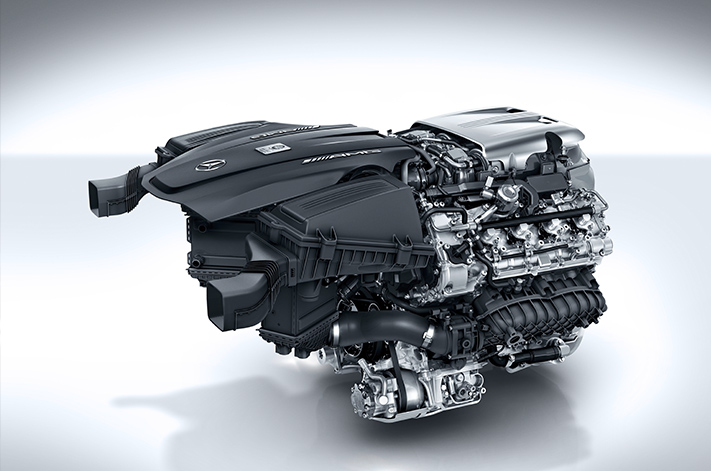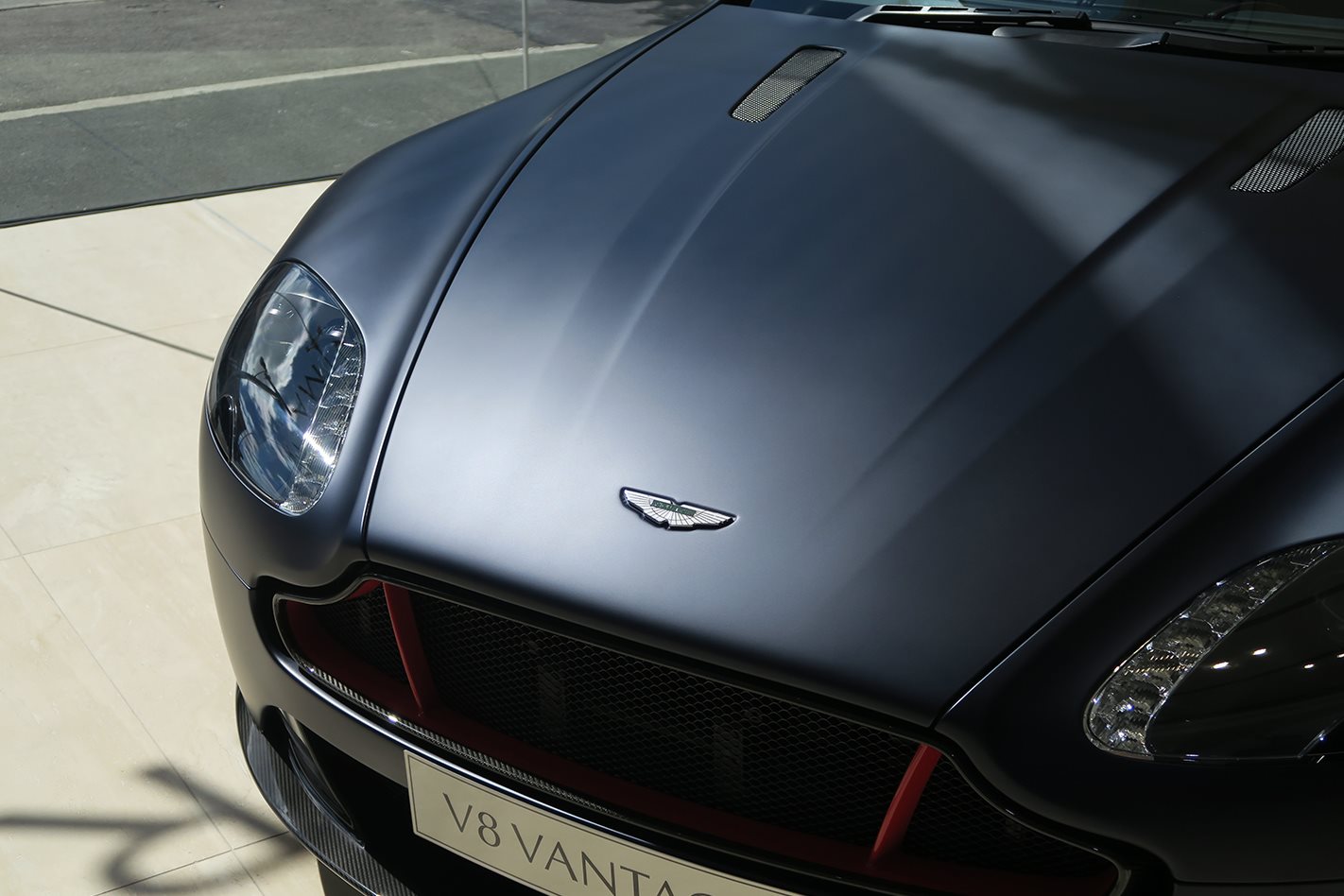ASTON MARTIN is phasing out its long-serving naturally-aspirated 4.7-litre V8 in favour of an AMG-sourced – and thoroughly modern – twin-turbocharged 4.0-litre V8, but the proudly British company won’t be simply hitting ctrl+v when it drops Benz’s bent-eight into the DB11 later this year.
Rather, it will be Aston’s own interpretation of AMG’s versatile eight-cylinder engine, with a character that will be, according to company boss Andy Palmer, quintessentially ‘Aston’.

“The answer is simply, ‘as much as we want’,” Palmer said, “the deal with the guys at AMG is, ‘don’t disturb them’.”
“The unit itself is already a very accomplished unit so you don’t have to do very much with it, but we do need to give it its own flavour and we do need to package it well, and being an Aston we do need to mount it low in the chassis to give a low centre of gravity.

The 4.0-litre twin-turbo V8 is already dry-sumped in the Mercedes-AMG GT, reducing the amount of engineering work that Aston Martin will need to do to mount it inside the upcoming DB11 V8 and the next-generation V8 Vantage.
It’s unlikely that Aston Martin will need to change any internal components of the AMG 4.0L either – at least not for regular road-going DB11 and Vantage V8s – but the exhaust and intake piping will require an extensive rework to adapt the powerplant to Aston’s all-alloy architecture. Thanks to the AMG engine’s “hot-V” configuration that puts both turbochargers between each cylinder bank, routing the exhaust plumbing between the turbine outlets and between the engine and firewall will be a challenge.
But it’s here where there’s the greatest scope to impart a uniquely Aston identity to the imported engine. Exhaust piping, after all, is component that defines the ‘voice’ of a car.

“It’s not a ‘buy an engine, finished, and design a car around it’ deal,” he continued, “we’ve had to do our own work on it.”
“And you have to. Sound is a great example: it has to sound like an Aston. I think you’ll enjoy it.”
The vital statistics of Aston Martin’s new V8 are still under wraps, but with the motor in its lowest-output form cranking out a sizable 350kW of power and 650Nm of torque (in the Mercedes-AMG C63 sedan), that’s already a handy increase on the V8 Vantage 4.7-litre’s 321kW and 490Nm figures.
And at the upper end of the power spectrum, the Mercedes-AMG E63 S smashes out a monstrous 450kW and 850Nm using a high-tune version of the same 4.0-litre V8 – 3kW more than the DB11 V12’s outputs. Aston’s version won’t necessarily produce identical metrics thanks to its bespoke intake, exhaust and tuning, but those numbers indicate the ballpark that Aston Martin is about to play in.
The first recipient of the new twin-turbo V8 will be the DB11 V8, which is expected to debut in the final quarter of this year as a companion to the already-launched V12 flagship.





